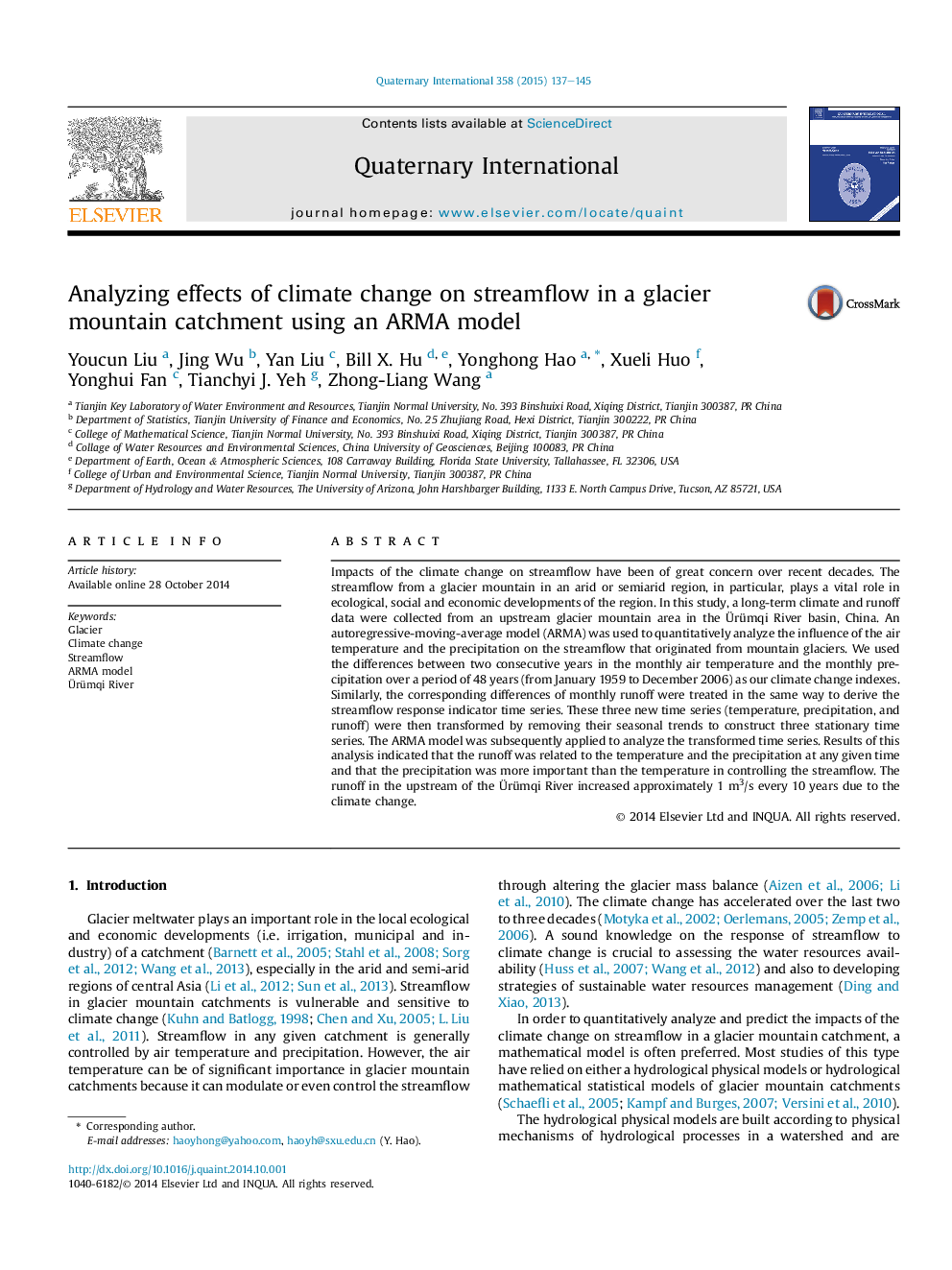| Article ID | Journal | Published Year | Pages | File Type |
|---|---|---|---|---|
| 1041026 | Quaternary International | 2015 | 9 Pages |
Abstract
Impacts of the climate change on streamflow have been of great concern over recent decades. The streamflow from a glacier mountain in an arid or semiarid region, in particular, plays a vital role in ecological, social and economic developments of the region. In this study, a long-term climate and runoff data were collected from an upstream glacier mountain area in the Ãrümqi River basin, China. An autoregressive-moving-average model (ARMA) was used to quantitatively analyze the influence of the air temperature and the precipitation on the streamflow that originated from mountain glaciers. We used the differences between two consecutive years in the monthly air temperature and the monthly precipitation over a period of 48 years (from January 1959 to December 2006) as our climate change indexes. Similarly, the corresponding differences of monthly runoff were treated in the same way to derive the streamflow response indicator time series. These three new time series (temperature, precipitation, and runoff) were then transformed by removing their seasonal trends to construct three stationary time series. The ARMA model was subsequently applied to analyze the transformed time series. Results of this analysis indicated that the runoff was related to the temperature and the precipitation at any given time and that the precipitation was more important than the temperature in controlling the streamflow. The runoff in the upstream of the Ãrümqi River increased approximately 1Â m3/s every 10 years due to the climate change.
Related Topics
Physical Sciences and Engineering
Earth and Planetary Sciences
Geology
Authors
Youcun Liu, Jing Wu, Yan Liu, Bill X. Hu, Yonghong Hao, Xueli Huo, Yonghui Fan, Tianchyi J. Yeh, Zhong-Liang Wang,
